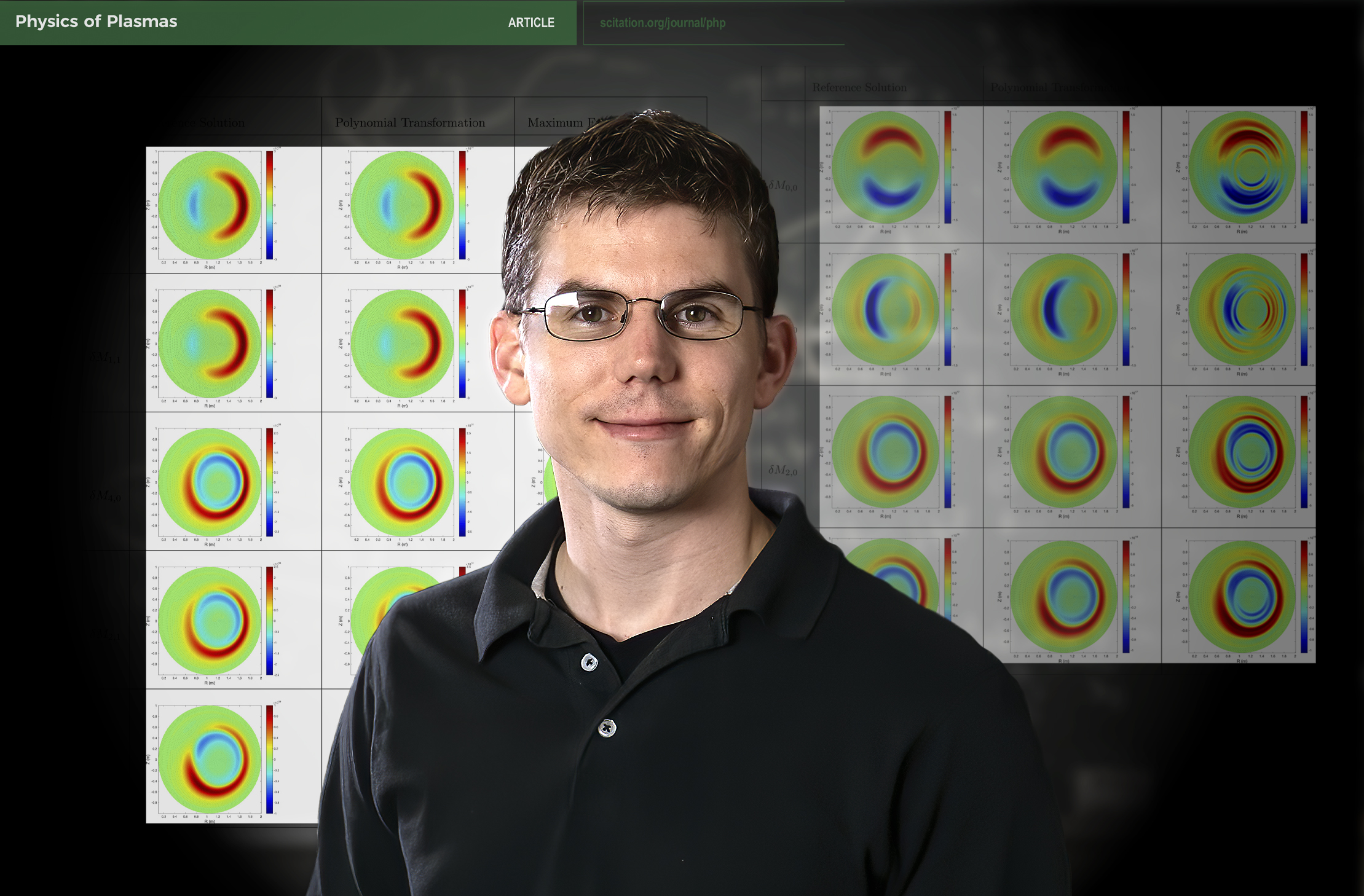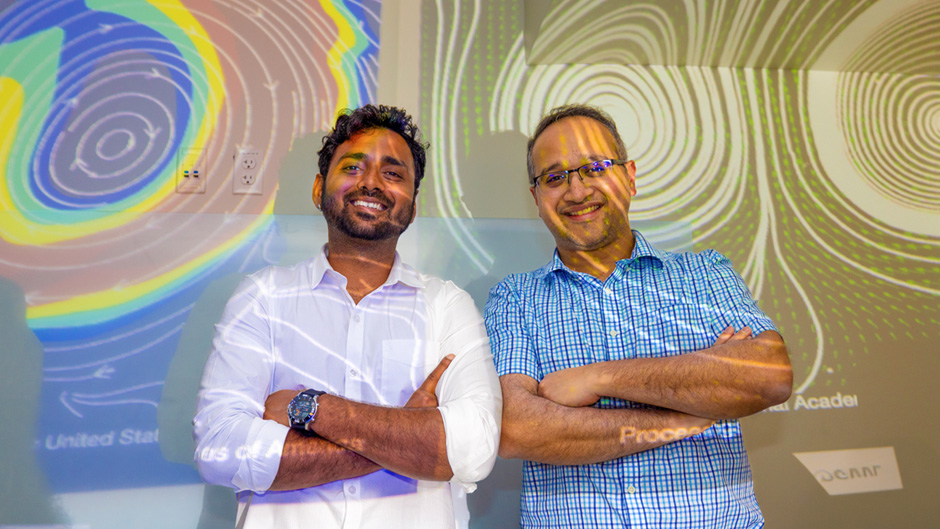The technique combines the millisecond behavior of fusion plasmas into longer-term forecasts. By using it, “we were able to demonstrate that accurate predictions of quantities such as plasma temperature profiles and heat fluxes could be achieved at a much reduced computational cost,” said Ben Sturdevant, an applied mathematician at PPPL and lead author of a Physics of Plasmas paper that reported the results.
Fusion combines light elements in the form of plasma — the hot, charged state of matter composed of free electrons and atomic nuclei — that generates massive amounts of energy. Scientists are working around the world to create and control fusion on Earth for a virtually inexhaustible supply of safe and clean power to generate electricity.
Speeding simulations
Sturdevant applied the mathematical technique to the high-performance XGCa plasma code developed by a team led by physicist C.S. Chang at PPPL. The application greatly speeded up simulations of the evolving temperature profile of ions orbiting around magnetic field lines modeled with gyrokinetics — a widely used model that provides a detailed microscopic description of the behavior of plasma in strong magnetic fields. Also accelerated was modeling the collisions between orbiting particles that cause heat to leak from the plasma and reduce its performance.
The application was the first successful use of the technique, called “equation-free projective integration,” to model the evolution of the ion temperature as colliding particles escape from magnetic confinement. Equation free modeling aims to extract long-term macroscopic information from short-term microscopic simulations. The key was improving a critical aspect of the technique called a “lifting operator” to map the large-scale, or macroscopic, states of plasma behavior onto small-scale, or microscopic, ones.
The modification brought the detailed profile of the ion temperature into sharp relief. “Rather than directly simulating the evolution over a long time-scale, this method uses a number of millisecond simulations to make predictions over a longer time-scale,” Sturdevant said. “The improved process reduced the computing time by a factor of four.”
The results, based on tokamak simulations, are general and could be adapted for other magnetic fusion devices including stellarators and even for other scientific applications. “This is an important step in being able to confidently predict performance in fusion energy devices from first-principles-based physics,” Sturdevant said.
Expanding the technique
He next plans to consider the effect of expanding the technique to include the evolution of turbulence on the speed of the process. “Some of these initial results are promising and exciting,” Sturdevant said. “We’re very interested to see how it will work with the inclusion of turbulence.”
Coauthors of the paper include Chang, PPPL physicist Robert Hager and physicist Scott Parker of the University of Colorado. Chang and Parker were advisors, Sturdevant said, while Hager provided help with the XGCa code and the computational analysis.
Support for this work comes from the Exascale Computing Project, a collaborative effort of the DOE Office of Science and the National Nuclear Security Administration, and Scientific Discovery through Advanced Computing (SciDAC). Computer simulations were performed at the National Energy Research Scientific Computing Center (NERSC), a DOE Office of Science User Facility.
PPPL, on Princeton University’s Forrestal Campus in Plainsboro, N.J., is devoted to creating new knowledge about the physics of plasmas — ultra-hot, charged gases — and to developing practical solutions for the creation of fusion energy. The Laboratory is managed by the University for the U.S. Department of Energy’s Office of Science, which is the single largest supporter of basic research in the physical sciences in the United States and is working to address some of the most pressing challenges of our time. For more information, visit energy.gov/science.
Original post https://alertarticles.info



